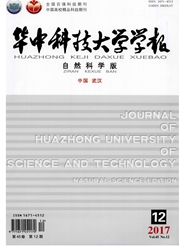

 中文摘要:
中文摘要:
通过构建车辆-钢弹簧浮置板轨道垂向耦合模型,计算分析了扣件(隔振器)刚度和阻尼对钢弹簧浮置板轨道频域随机振动的影响规律,为钢弹簧浮置板轨道关键设计参数的合理选择与组合优化提供理论依据.研究结果表明:a.在钢弹簧浮置板轨道垂向位移满足规范要求的前提下,尽可能降低扣件与隔振器刚度;b.扣件阻尼增大能够降低浮置板轨道及其下方基础20~65 Hz的中高频振动,但同时会放大其80 Hz以上的高频振动,建议扣件阻尼系数的取值范围为50~100kN/(m·s-1);c.隔振器阻尼增大可略微降低浮置板轨道基础5~16Hz的中低频振动,但同时会显著放大其20Hz以上的中高频振动,建议隔振器阻尼系数应控制在55~75kN/(m·s-1)范围内.
 英文摘要:
英文摘要:
A coupled dynamics model for metro vehicles and the steel-spring floating-slab track(SSFST)was established to analyze the influence of the stiffness and damping of rail pads(the isolators)on the frequency-domain random vibration characteristics of vehicle-track coupled system,which provided theoretical basis for the key design parameters optimization of SSFST.The results show that on the premise that vertical displacement of SSFST meets the specification requirements,the stiffness of rail pad and isolator can be decreased to improve the vibration-reduction effect of SSFST.The vibration response of SSFST and beneath SSFST(subgrade)will decrease effectively in 20~65 Hz,when fastener damping increases,while the high-frequency vibration response above 80 Hz will be amplified.Therefore,fastener damping coefficient should be within 50~100 kN/(m·s~(-1)).With the increase of isolator damping,the vibration response beneath SSFST will reduce slightly in 5~16 Hz,while the vibration response above 20 Hz will be significantly enlarged.Therefore,isolator damping coefficient should be controlled in 55~75 kN/(m·s~(-1)).
 同期刊论文项目
同期刊论文项目
 同项目期刊论文
同项目期刊论文
 期刊信息
期刊信息
